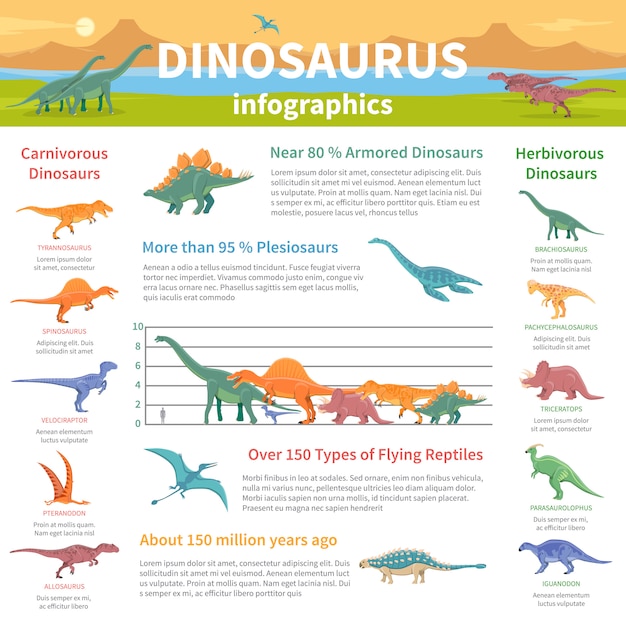T-rex Facts – Everything You Need to Know About the King of Dinosaurs

The T-rex, also known as Tyrannosaurus rex, is one of the most iconic dinosaurs.
T-rex was one of the largest carnivorous dinosaurs that ever roamed the Earth.
With its powerful jaws and sharp teeth, the T-rex was a formidable predator.
Despite its size, the T-rex had relatively short arms compared to the rest of its body.
T-rex had a huge head and strong neck, allowing it to deliver crushing bites to its prey.
The word Tyrannosaurus means tyrant lizard in Greek, reflecting the dinosaur’s fearsome reputation.
T-rex had a keen sense of smell, which helped it locate potential meals from afar.
With its sharp vision, the T-rex was able to spot movement even in low light conditions.
T-rex is believed to have had feathers on at least parts of its body, making it somewhat bird-like in appearance.
The T-rex’s teeth were constantly growing and being replaced throughout its life.
T-rex had a bite force of up to 12,800 pounds per square inch, strong enough to crush bones.
The T-rex was one of the last non-avian dinosaurs to exist before the mass extinction event.
T-rex had a long, powerful tail that helped it maintain balance while running.
Some scientists believe that T-rex may have been a scavenger rather than an active hunter.
T-rex had large, muscular legs that allowed it to reach speeds of up to 20 miles per hour.
The arms of the T-rex were not very useful for grasping and were likely used primarily for balance.
T-rex Facts – Everything You Need to Know About the King of Dinosaurs part 2
T-rex had a highly developed brain, making it one of the most intelligent dinosaurs.
The T-rex had a unique two-fingered hand with sharp claws.
T-rex lived during the Late Cretaceous period, around 68 to 66 million years ago.
The T-rex was probably warm-blooded, allowing it to maintain a high metabolism.
T-rex was a member of the theropod group of dinosaurs, which also includes Velociraptors.
T-rex had a long, muscular neck that allowed it to reach and tear flesh from its prey.
T-rex may have been capable of vocalizations, including low-frequency roars.
The T-rex had a large olfactory bulb, suggesting it had a well-developed sense of smell.
T-rex had uniquely shaped teeth with serrated edges, perfect for tearing through tough flesh.
The T-rex had a bony ridge above its eyes, believed to provide shade or help in courtship displays.
T-rex may have had feathers for insulation or display purposes, similar to modern-day birds.
T-rex had hollow bones, reducing its overall weight and making it more agile.
T-rex had a lifespan of about 30 years, although some individuals may have lived longer.
T-rex was likely a solitary creature, only coming together to mate.
T-rex had a highly developed sense of hearing, able to detect low-frequency vibrations.
T-rex had a specialized notch in its upper jaw, allowing it to bite down with greater force.
T-rex had a powerful rear end and strong hind legs, enabling it to deliver powerful kicks.
Some T-rex specimens have been found with bite marks from other T-rex, suggesting they may have engaged in intraspecific combat.
T-rex had a bumpy, scaly skin, with various patterns and colors for camouflage.
T-rex may have had a higher growth rate during its juvenile years, similar to modern-day birds.
T-rex had a unique skull structure, with large fenestrae and thin bones, making it lighter and more agile.
T-rex had a large, muscular jaw joint that allowed it to open its mouth wide for a more forceful bite.
T-rex teeth were constantly being shed and replaced, with some individuals having over 60 teeth at any given time.
The T-rex had a relatively small brain compared to its body size, but it was highly efficient.
Some T-rex specimens have been found with healed injuries, indicating that they were able to recover from their wounds.
T-rex likely had excellent depth perception, allowing it to accurately judge distances while hunting.
T-rex may have been able to swallow smaller prey whole, thanks to its flexible throat and expandable ribcage.
T-rex babies were relatively small and vulnerable, relying on their parents for protection and food.
T-rex has captured the imagination of people around the world, becoming a symbol of prehistoric power and might.

